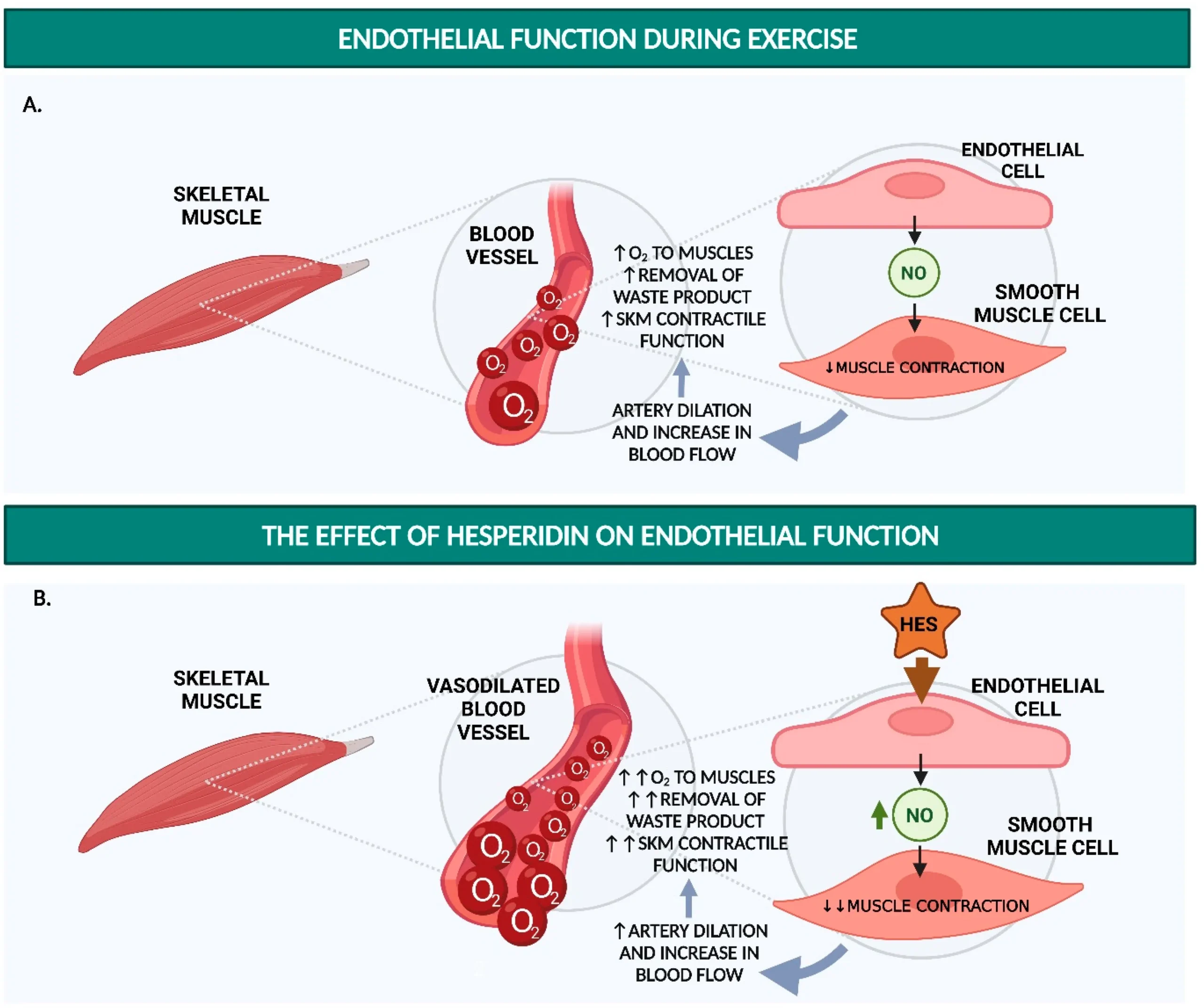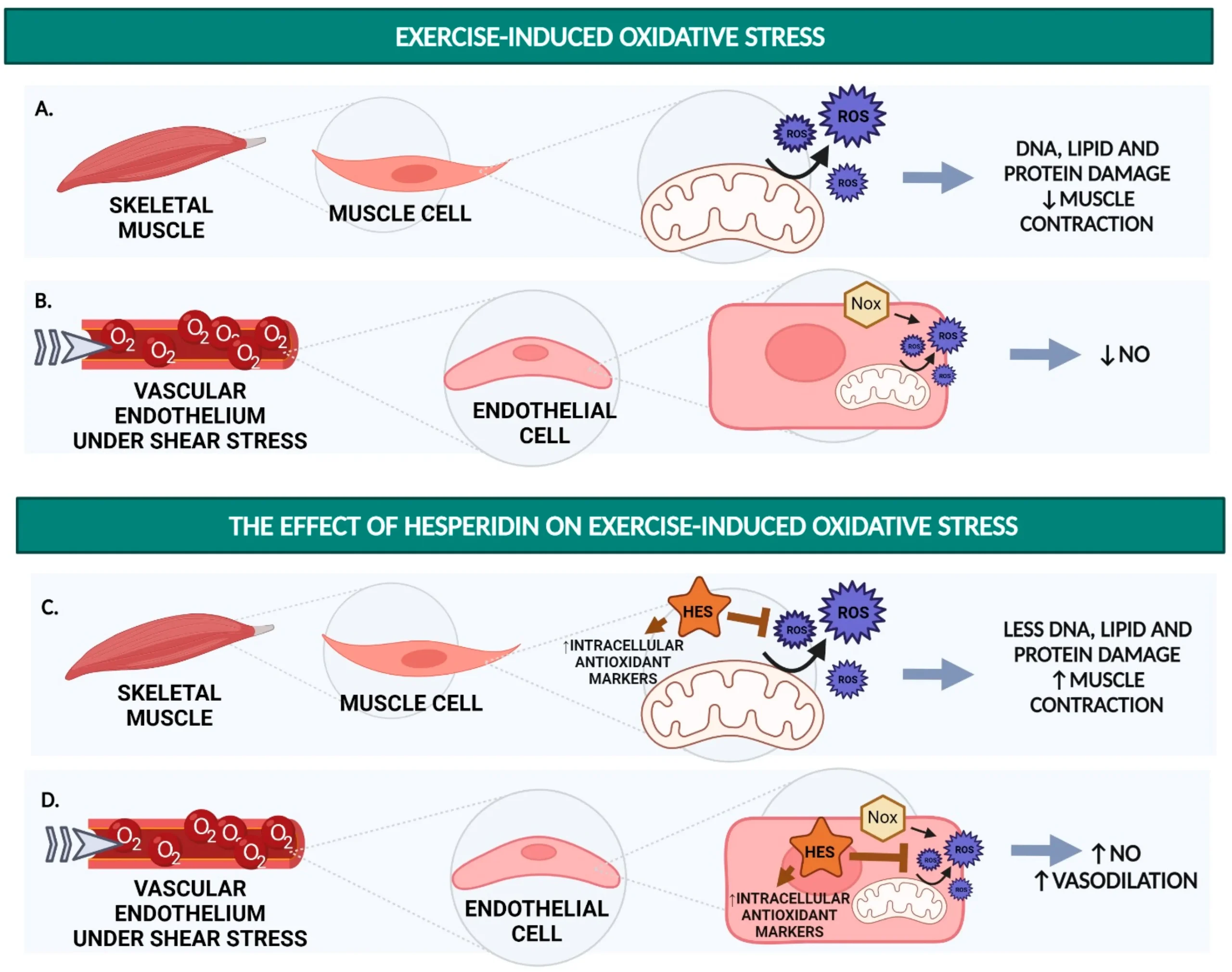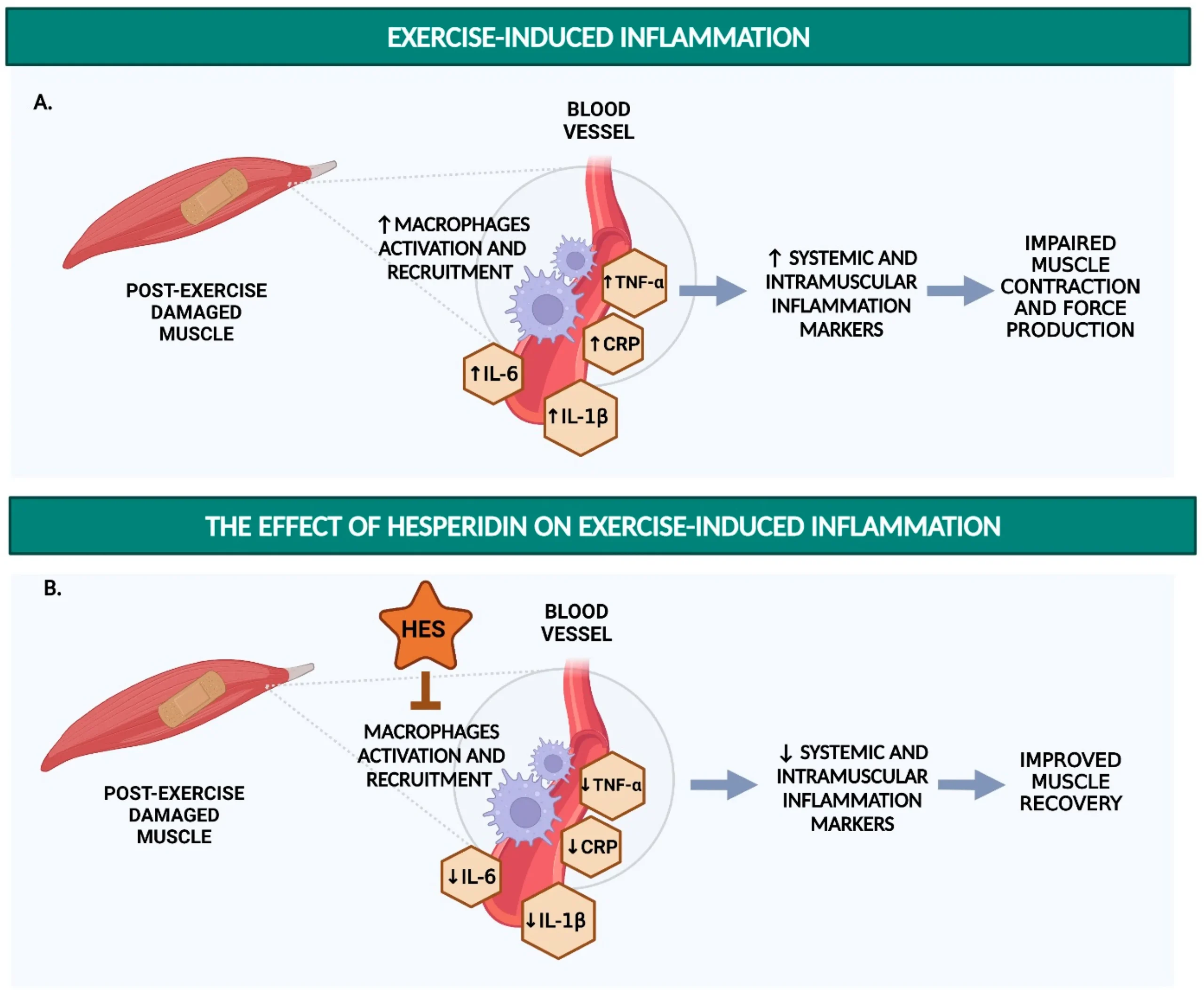Meest recente publicaties
M. Imperatrice, I. Cuijpers, F.J. Troost, M.M.J.P.E. Sthijns.
Exercise Performance. Nutrients (2022), 14, 2955.
https://doi.org/10.3390/nu14142955
Abstract
The regulation of blood flow to peripheral muscles is crucial for proper skeletal muscle functioning and exercise performance. During exercise, increased mitochondrial oxidative phosphorylation leads to increased electron leakage and consequently induces an increase in ROS formation, contributing to DNA, lipid, and protein damage. Moreover, exercise may increase blood- and intramuscular inflammatory factors leading to a deterioration in endurance performance. The aim of this review is to investigate the potential mechanisms through which the polyphenol hesperidin could lead to enhanced exercise performance, namely improved endothelial function, reduced exercise-induced oxidative stress, and inflammation. We selected in vivo RCTs, animal studies, and in vitro studies in which hesperidin, its aglycone form hesperetin, hesperetin-metabolites, or orange juice are supplemented at any dosage and where the parameters related to endothelial function, oxidative stress, and/or inflammation have been measured. The results collected in this review show that hesperidin improves endothelial function (via increased NO availability), inhibits ROS production, decreases production and plasma levels of pro-inflammatory markers, and improves anaerobic exercise outcomes (e.g., power, speed, energy). For elite and recreational athletes, hesperidin could be used as an ergogenic aid to enhance muscle recovery between training sessions, optimize oxygen and nutrient supplies to the muscles, and improve anaerobic performance.


 Schematic summary of the potential mechanism of action for the hesperidin effect on endothelial function during exercise. (A) During exercise, the release of nitric oxide (NO) by endothelial cells causes the relaxation of the smooth muscle cells, which leads to the dilation of an artery and an increase in blood flow. (B) Hesperidin increases the endothelial cells’ NO production. This process leads to higher artery dilation, which further improves blood flow. During exercise, improved skeletal muscle perfusion and the consequent increase in oxygen (O2) efflux to the muscle can improve endurance performance. The figure was created with BioRender.com. Abbreviations: HES = hesperidin; NO = nitric oxide; O2 = oxygen; SKM = skeletal muscle; Increased: ↑ < ↑↑; Decreased: ↓ < ↓↓
Schematic summary of the potential mechanism of action for the hesperidin effect on endothelial function during exercise. (A) During exercise, the release of nitric oxide (NO) by endothelial cells causes the relaxation of the smooth muscle cells, which leads to the dilation of an artery and an increase in blood flow. (B) Hesperidin increases the endothelial cells’ NO production. This process leads to higher artery dilation, which further improves blood flow. During exercise, improved skeletal muscle perfusion and the consequent increase in oxygen (O2) efflux to the muscle can improve endurance performance. The figure was created with BioRender.com. Abbreviations: HES = hesperidin; NO = nitric oxide; O2 = oxygen; SKM = skeletal muscle; Increased: ↑ < ↑↑; Decreased: ↓ < ↓↓
